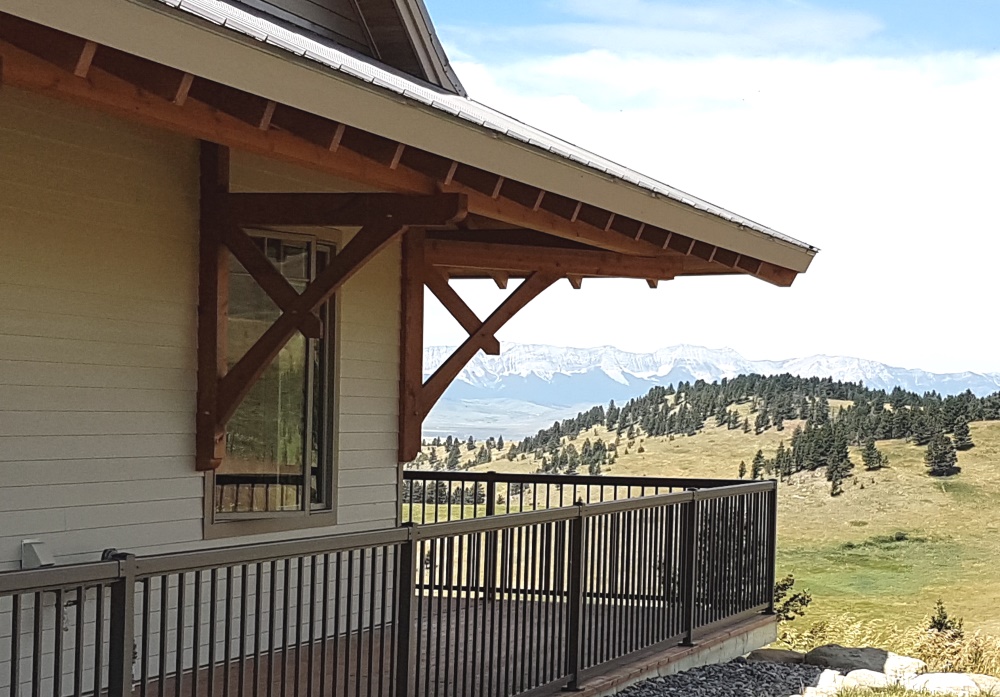
According to a 2018 study by AMLI Residential, 84 percent of their apartment dwellers said that they considered it very important to live in a sustainable building. Most of the respondents were under the age of 34, so these represent potential future home buyers. “Green homes” are not just popular in today’s market. This survey shows that they will be in high demand for years to come. But what exactly is an eco-friendly timber house and what types of features does one have? Learn what constitutes a sustainable home and discover the energy efficiency and many other advantages of timber sustainable homes.
What is an Eco-Friendly Timber House?
An environmentally-friendly house, also known as a green home, is one that is both healthy and sustainable. Eco-friendly homes are designed to be energy efficient and less costly to maintain while providing a cleaner, safer indoor environment. These types of houses are made from sustainable materials using practices and methods that do not significantly contribute to greenhouse gases that are responsible for global warming. Concrete, made from cement, is one of the biggest producers of carbon dioxide, which is a powerful greenhouse gas. Wood, on the other hand, when it’s sustainably sourced, is environmentally friendly. An eco-friendly home might also have features like solar panels on the roof that generate electricity from the sun or low-flush toilets that conserve water.
Understanding LEED Certified Homes
The U.S. Green Building Council, with representatives from building firms and nonprofits, was founded in 1993 to promote sustainable building industry practices. They developed a green building certification program, later known as LEED (Leadership in Energy and Environmental Design). This program covers building design, construction, operations and maintenance. There are different certification levels, but in general, for a single-family home to be LEED certified, it must get high marks in areas such as energy efficiency and water usage, building materials, air quality and land placement. In terms of resale value, a LEED certified home is highly desirable, as are LEED-certified buildings in general. In the AMLI Residential survey, 64% of people said that they would pay more to live in a green community. Even if your new home isn’t LEED certified, following the principles of LEED during construction can help drastically improve the eco-friendliness of your living space.
What Features Does an Eco-Friendly Timber House Have?
If you’re interested in buying or building an eco-friendly house, whether you’re looking at rustic eco-friendly log cabins or something more contemporary, there are various features you should look for or consider incorporating into your new home design.
Features of an eco-friendly house include:
- Use of building materials that are sustainable, ethical and non-toxic, such as reclaimed timber
- Effective, eco-friendly insulation
- Water conservation, such as rainwater harvesting systems and low-flow showerheads and taps
- Renewable energy design (for example, using solar panels, biomass boiler systems and heat pumps)
- Healthy indoor air quality
- Using natural lighting and proper ventilation
- Installing Energy Star appliances that have been rated as energy efficient
- Using ‘Smart Technology’ that reduces energy consumption
- Waste and pollution reduction measures
- Recycling and re-use, wherever possible
- Consideration of the surrounding environment in the design and construction
It isn’t just office buildings and large industrial complexes that can adhere to sustainable, eco-friendly practices. Private homes can also be green buildings, and these types of houses provide a healthier environment as well as savings in utility costs.
Are Timber Homes Sustainable?
For those who are serious about building and living in an eco-friendly home that’s both stunning and sustainable, green timber framing is the perfect solution. The entire process, from the sourcing of the wood to the home’s construction, is very important. You can choose from sustainably harvested, reclaimed or recycled timber, all of which are environmentally friendly building methods. Eco timber homes are beautiful and long-lasting.
- Sustainably Harvested – We source our Douglas fir and red cedar timber from forests that are correctly managed in British Columbia.
- Reclaimed – These timber beams are from trees that have been salvaged from forest fires. The forest is replanted after the trees are reclaimed so that it can regenerate.
- Recycled – This is antique lumber, which is retrieved from unused buildings. In addition to the eco-friendly practice of reusing, these timber beams have a special character and history.
Other ways in which timber homes are sustainable is in their use of SIPs (Structural Insulated Panels) and a built-up roof system. Timber frame SIPs form a strong building envelope that helps reduce heating and cooling costs by up to 50%, compared to fiberglass insulation. The built-up roof system creates vented air space above the insulation, providing weatherproofing, waterproofing and protection from UV rays. This roof design is also extremely durable, reliable and low maintenance. The fact that timber homes last a long time also makes them environmentally sound, as well as a smart investment.
In Conclusion
Timber sustainable homes are a “win-win” for anyone who enjoys the beauty and elegance of natural wood. Whether your personal taste is an eco-friendly timber home that’s simple and classic, or a more artistic and contemporary showcase home, by using these guidelines, you can save money on energy costs while helping the planet.